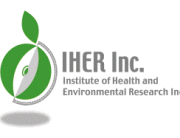Why Consumers Are Concerned About GM Foods, And Have Every Right To Be.
Genetically modified (GM) foods are produced using ingredients derived from GM organisms, including microbes (eg yeast), crops, and animals. Foods that have come from animals fed GM feed (eg meat, eggs, meat and honey) are also regarded as GM foods by many people.
Source: non-gm-farmers.com
Date: 16/01/2003
Concerns about GM foods fall into three broad categories:
(1) food safety,
(2) possible environmental problems, and
(3) problems inherent in trying to make people buy and eat foods which they clearly do not want.
As medical experts, we will deal with the first of these.
There are many scientifically valid concerns raised by independent scientists world-wide about the safety of these foods. For example, it appears that safety testing was brief (eg not long enough for cancer studies), not done on people before release, and done by companies who want to sell it.
Many substances that currently cause long-term health problems in people would be considered to be safe after the type of tests done on these foods. Furthermore, no country in the world has developed a surveillance system designed to determine whether these foods may be causing harm to people.
Particular concerns include potential allergic reactions, unanticipated toxins, antibiotic-resistant bacteria, and the use of viral promoters.
It is also a matter of public record that GM foods were initially approved as safe as a consequence of a political directive which overrode the warnings of the US Food and Drug Administration’s own experts. The US FDA experts warned that GM foods pose special risks and warrant special testing. Details of the FDA’s internal memos, which only came to light during a US court case, can be seen at www.bio-integrity.org.
The Public Health Association of Australia (PHAA), the peak population health association in Australia, has raised serious concerns about the adequacy of safety testing and the approach and standards of our regulatory authority on GM foods. Consequently, the PHAA considers that no further GM foods should be approved for sale without comprehensive independent safety testing being undertaken and published in peer-reviewed journals.
Currently-approved GM foods should also be subject to review using the same safety testing. This testing must include human health trials. In addition, the PHAA is also seeking a more thorough labelling system and a specific surveillance system capable of picking-up any short or long-term health effects from eating GM foods.
It is always worrying when a government body choses to attack as unscientific and emotional, those who question the validity of their processes. Similarly, when government bodies fall back on the old stance that their processes are the best in the world, instead of examining the queries placed before them, one can only wonder at their lack of scientific objectivity. If this sounds familiar, remember what happened to the initial warnings about mad cow disease being transferred to humans.
Certain proponents of GM foods and government instrumentalities also suggest that the Australian public just needs more “education” on the matter. However, consumers are aware that these foods provide potential risks to them without any benefits to them. Is it any wonder that they are asking: Why take the risk?
Such is the public concern, that almost all 500,000 copies of the “True Food Guide”, a list of GM-free foods, have been taken by consumers.
A copy can be seen on www.greenpeace.org.au/truefood.
Food is something that essentially the entire Australian population consumes several times a day. Extreme caution should therefore have been used in the safety assessment of GM foods.
On the basis of the evidence before us, we have concluded that this has not happened, and that consumers have every right to want to avoid these foods.
Dr Judy Carman, BSc (Hons), PhD, MPH
Dr Kate Clinch Jones, BM, BS
Source: GE Free Victoria from Gill Rosier
Note: It is important for farmers to understand consumer concerns in order to predict market restrictions and deal with implications of contamination and segregation arising from the need to allow consumers choice.



































